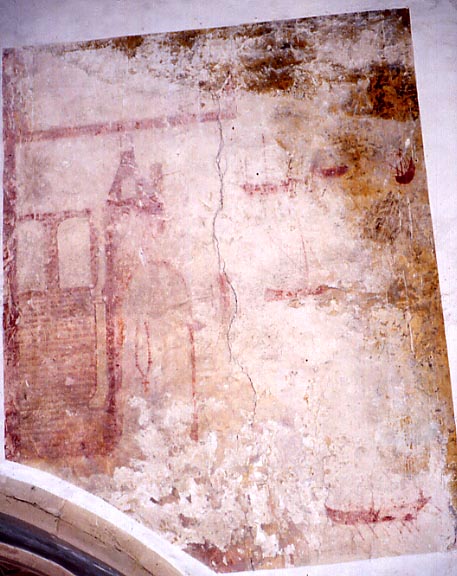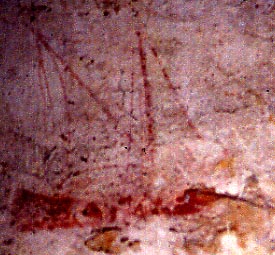Littlebourne, Kent (†Canterbury) C.15
St Christopher

The presence of St Christopher himself now has to be inferred from the details – hermit, hermitage, ships – that once surrounded him. The identification is however certain; according to local tradition there was once a chapel of St Christopher in the church, where prayers were offered before fording the river Stour at nearby Grove. A man called William Davyson left 2lbs of wax for tapers to St Christopher in 1514.
The hermitage is at the far left. The brick-effect is interesting, but quite possibly illusory and an effect of time and wear – the hermitage wall might originally have been painted in solid red ochre. A rosary with a cross shows well against the hermit’s robe.

Various ships and boats are shown in the river, and their designs are very probably the result of direct observation. In the vertical centre of the painting, very faint, (left) is a vessel with two triangular sails and a generally storm-tossed appearance. At the lower right of the painting, and shown below at the right, is a kind of longship with many oars showing, along with traces of several oarsmen and the steersman in the stern at the right.

Above this (photo, below left) are are at least three more craft, one a three-masted schooner, what looks like a smaller wherry or similar boat near the centre, and a galleon-like vessel, evidently coping with turbulent water, at the right.

Very competently drawn ships are often found scratched into woodwork or stone in medieval churches, but few painted vessels are as carefully observed and well-executed as these at Littlebourne. This is the only remaining painting in the church, but there were probably once many more.
† in page heading = Diocese